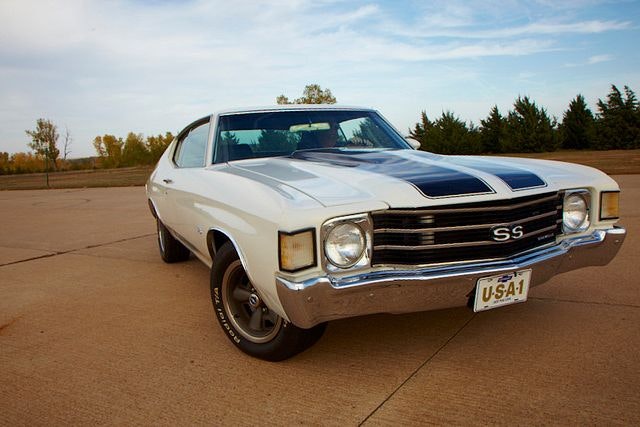All prices shown here are based on various data sources, as detailed in About Our Prices. The Hagerty Price Guide is for informational purposes only and is not intended as financial advice. More information on how forecast models are calculated can be found on Forecasted Values page. For additional information and a complete description of benefits, visit hagerty.com/legal. Purchase of insurance not required for membership in HDC. Hagerty, Hagerty Valuation Tools & Hagerty Drivers Club are registered trademarks of The Hagerty Group LLC, ©2025 The Hagerty Group, LLC. All Rights Reserved. The Hagerty Group, LLC is a wholly owned subsidiary of Hagerty, Inc.
Select the Chevrolet Chevelle model year you want to research current market prices for
Despite its short existence on the automotive timeframe — just 14 years between 1964 and 1978 — the Chevelle had a big impact on the Muscle Car era. Originally conceived as a mid-size option to run between the full-size Impala and the smaller Chevy Nova, it quickly jumped into the high-performance arms race with a 300hp engine in 1964, upped to a 350hp engine a year later as the company introduced the popular Super Sport edition badged as a Malibu SS.
The Chevelle was redesigned in 1966 to move towards the popular curvy “Coke bottle” styling, with the second generation of Chevelle emerging in 1968 with further style and performance updates. It wasn’t until the the early ’70s that the Chevelle (and for many, the muscle car era overall) truly hit its peak, pairing iconic muscle-car style with raw power from a variety of big-block engines including the legendary Chevy LS6 454, delivering 450hp to the rear axle. Adding a scooped hood and twin racing stripes to the vehicle didn’t hurt its appeal either. (Neither did the 1970 Chevelle’s appearance in the Fast & Furious franchise.)
Chevelle styling remained largely unchanged through the next couple years even as federal restrictions dialed back horsepower ratings across the board. A redesign in 1973 brought on the “Colonnade” body style in the same year as the oil embargo, and Chevelle limped through a few more years (abandoning the big block powerplant in 1975) before finally being retired in 1977 in favor of the Malibu. Despite its brief lifespan, Chevelles — especially the wildly popular collectors models like the COPO and Yenko versions — live on in car shows nationwide by the thousands.
